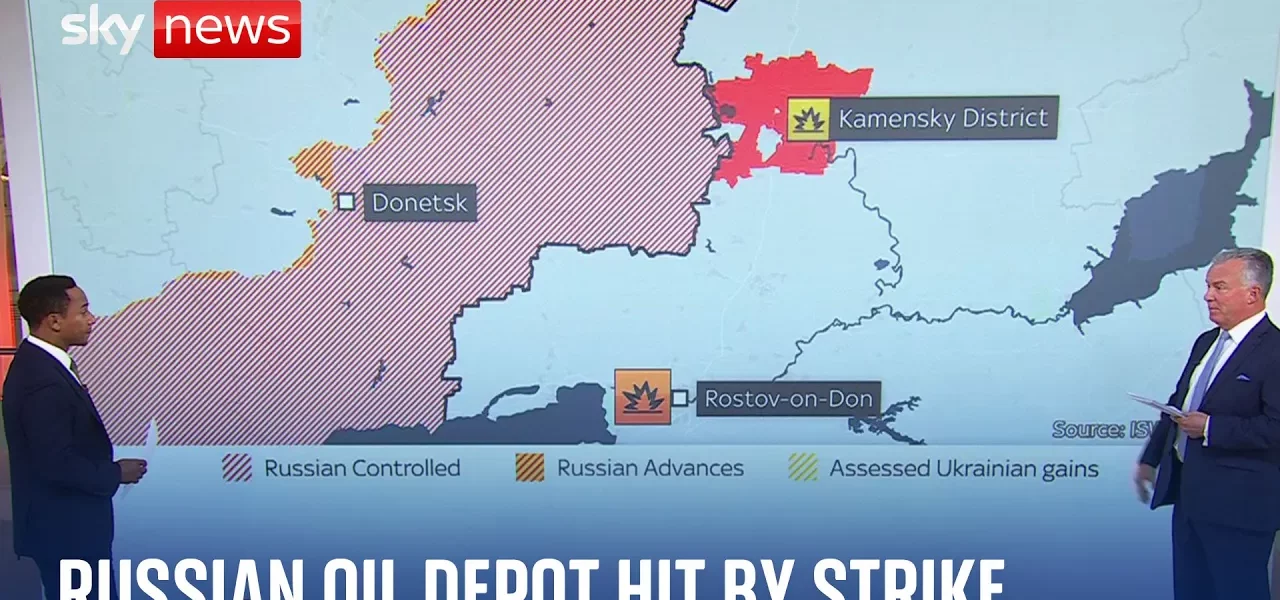Recent Ukrainian Drone Strikes: An In-Depth Analysis

This article explores the recent Ukrainian drone strikes on Russian oil facilities, the implications of these attacks on the ongoing conflict, and President Zelensky’s proposed victory plan amidst the challenging military landscape.
Introduction
The ongoing conflict between Ukraine and Russia has seen a significant escalation in military tactics, particularly with Ukraine’s focus on targeting Russian oil facilities. In the last two weeks alone, multiple drone strikes have been reported, indicating a strategic shift aimed at crippling Russia’s oil revenue. This article delves into these recent developments, examining the implications of Ukraine’s military strategies, the significance of oil production in the conflict, and the evolving dynamics of the battlefield.
Ukrainian Drone Strikes on Oil Facilities
In recent events, Ukrainian attacks have specifically targeted oil storage facilities in the Rostov region of Russia. These strikes are not isolated incidents; they are part of a broader strategy to undermine Russia’s economic capabilities and war-funding mechanisms. Here are some key points to consider:
- Frequency of Attacks: The latest attack marks the second in just two weeks, indicating a persistent effort by Ukraine to disrupt Russian oil supply.
- Impact on Oil Storage: Reports indicate that three oil storage tanks are currently ablaze, with local officials initially downplaying the extent of the damage.
- Historical Context: Similar attacks have occurred previously, highlighting an ongoing campaign to target critical infrastructure.
Why Target Oil Facilities?
Oil is a critical revenue source for Russia, and by targeting these facilities, Ukraine aims to:
- Reduce Russia’s oil exports.
- Weaken Russia’s financial resources for military operations.
- Shift the economic burden of the war onto Russia.
Developments in Ukrainian Military Technology
In addition to drone strikes, Ukraine has made advancements in its military technology, including the development of its own ballistic missiles and new types of drones. This section explores these developments:
Ballistic Missiles
Ukraine has recently claimed to have developed and fired its first ballistic missile. This capability could significantly alter the balance of power on the battlefield:
- Enhanced strike capabilities against key Russian targets.
- Increased deterrence against Russian aggression.
- Potential for greater international support due to advanced military technology.
New Drone Technology
Reports suggest that Ukraine is also deploying a new medium-range drone, which could play a crucial role in supporting ground operations:
- Improved reconnaissance and surveillance.
- Increased operational range and strike capability.
- Potential to disrupt Russian supply lines more effectively.
President Zelensky’s Victory Plan
Amidst these military developments, President Zelensky has announced a “victory plan” that he intends to present to Western leaders. This plan is pivotal for Ukraine’s future military strategy:
Context of the Victory Plan
Following a challenging summer for Ukraine, the victory plan aims to:
- Shift the momentum back to Ukraine.
- Enhance military support from Western allies.
- Foster a sense of urgency in addressing Russian aggression.
Key Objectives
While the specifics of the plan remain classified, the overarching goals likely include:
- Strategic offensives to reclaim lost territories.
- Mobilizing international support for increased military aid.
- Encouraging Western nations to lift restrictions on military assistance.
Recent Developments in Air Operations
Another significant aspect of the conflict has been the dynamics of aerial combat. Recently released footage has shown the downing of Russian aircraft, shedding light on the challenges faced by Russian air support units:
Details of the Incident
The footage displays two Russian Su-25 Frogfoot aircraft, which are often used for close air support. Key points include:
- Vulnerability of low-flying aircraft to handheld missiles.
- Increased risks for Russian pilots operating near the front lines.
- The dynamic nature of aerial battles, with significant losses reported.
Impact on Russian Air Operations
The loss of these aircraft has broader implications for Russian military strategy:
- Reduced effectiveness of air support for ground operations.
- Increased reliance on alternative air tactics.
- Potential demoralization among Russian pilots and troops.
Conclusion
The recent Ukrainian drone strikes and advancements in military technology represent a significant shift in the ongoing conflict with Russia. President Zelensky’s proposed victory plan aims to leverage these developments to regain momentum and secure necessary support from Western allies. As the battlefield dynamics continue to evolve, it remains crucial for Ukraine to maintain its strategic initiatives to undermine Russian capabilities effectively. For more insights on military strategies and geopolitical developments, explore our related articles.
“`




